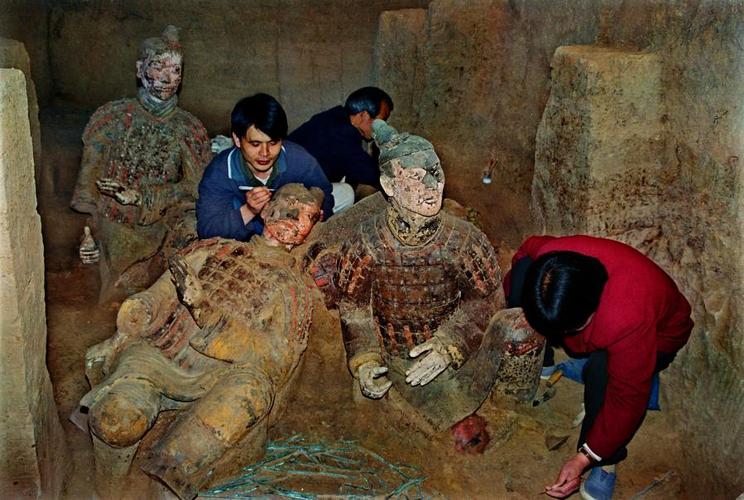
How Long Have the Terracotta Army Been Buried?
Near the unexcavated tomb of Qin Shi Huang—who proclaimed himself the first emperor of China in 221 B.C.E.—lay an extraordinary underground treasure: an entire army of life-size terra-cotta soldiers and horses, interred for more than 2,000 years.
The Discovery and Significance of the Terracotta Army
In 1974, a group of farmers digging a well in Xi'an, China stumbled upon an incredible discovery – fragments of terracotta figures that would change history. These fragments were the first signs of the Terracotta Army, a vast collection of life-sized terracotta sculptures depicting the armies of Qin Shi Huang, the first Emperor of China. This accidental find unveiled one of the most significant archaeological discoveries of the 20th century, offering an unprecedented glimpse into the military might and artistry of ancient China.
Calculating the Age of the Terracotta Army
To determine how long the Terracotta Army has been buried, we look back to the reign of Qin Shi Huang. He ruled from 246 B.C.E. until his death in 210 B.C.E. The construction of his mausoleum, including the creation of the Terracotta Army, began soon after his ascension to the throne and continued for several decades. This places the initial burial of the Terracotta Army around the late 3rd century B.C.E.
Considering the present year is 2023 C.E., we can calculate that the Terracotta Army has been buried for well over 2,200 years.
Preservation and the Passage of Time
The Terracotta Army's remarkable state of preservation is due in part to the depth of their burial and the composition of the surrounding soil. However, time has taken its toll. The original brightly painted surfaces have faded, and some figures have suffered damage from the elements and the weight of the earth above.
FAQs
How many soldiers are in the Terracotta Army?
It’s estimated that there are over 8,000 soldiers, 130 chariots with 520 horses, and 150 cavalry horses.
Why was the Terracotta Army built?
The Terracotta Army was built to accompany Qin Shi Huang, China’s First Emperor, into the afterlife. He wanted to ensure he had the same military might and protection in the afterlife as he did during his reign.
What is the significance of the Terracotta Army?
The Terracotta Army is significant for several reasons:
- Historical Significance: It provides invaluable insights into the military organization, weaponry, and cultural practices of the Qin dynasty.
- Artistic Value: The Terracotta Army is a testament to the artistry of the Qin dynasty, with each figure showcasing incredible detail and craftsmanship.
- Cultural Importance: The Terracotta Army is a source of immense national pride in China and a symbol of the country's rich history and cultural heritage.